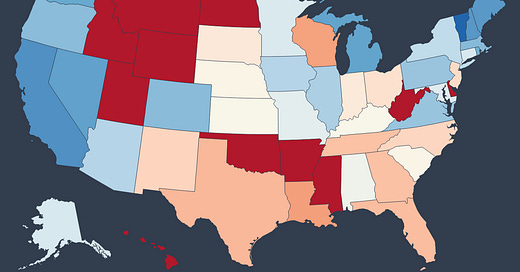Fall means the return of competition between colleges here in the United States. No, I’m not talking about college football (although… Roll Tide). I’m talking about faculty hiring.
As I know from my time on search committees (including as departmental chair), in theory each element of a prospective faculty member’s application serves as a predictor of success and an indicator about the type of colleague the applicant may be. Research and teaching statements are expected by most institutions, at least for full-time faculty positions. But in addition, some institutions of higher ed have required DEI statements.
An analysis from researchers at the American Enterprise Institute (AEI) of faculty jobs posted during Fall 2020 found that 19% of job ads required a DEI statement—a number the researchers acknowledged likely underestimated the prevalence.
Though fairly widespread, the practice of asking for DEI statements has become extremely controversial because, as HxA President John Tomasi has noted, “diversity statements have gone beyond implicit pressure, and have [at times] been used as blatant litmus tests for ideology.”
Data show that DEI statements which do not “discuss race/ethnicity and gender diversity actions or efforts” are rated as weaker and result in candidates being seen as “less competent, less hireable, and less likable.” Discussions of socioeconomic diversity, efforts to engage students from rural communities, and (heaven forbid) viewpoint diversity did not speak the shibboleths that committees requesting such statements were looking for.
Given this context and the increasing number of states that have been passing “divisive concepts” bills (laws that seek to restrict DEI-related activities and education), I wanted to assess the current prevalence of DEI statement requirements in hiring, in addition to exploring regional differences in requirements.
For this analysis, 1,907 postings for full-time professorships in the United States were pulled from HigherEdJobs.com, all of them job searches that were live during the month of August 2024.
Jobs were listed in every state in the U.S. and the District of Columbia, and represented opportunities at 550 institutions of higher ed. Unsurprisingly, those states with the most number of colleges/universities (California, New York, Texas, Florida, and Pennsylvania) had the highest number of open faculty positions.
I found job openings in every state, but many schools hadn't started hiring in earnest yet. This explains why quite a few states had fewer than 10 job listings. Even though these small numbers might not tell the whole story, we can still start to get an idea of how often schools are asking for diversity statements when they hire.
Using OpenAI’s API, I prompted GPT-4o mini to extract information pertaining to diversity statements mentioned in the ads. I also tasked the model to extract whether the job ad de facto required a DEI statement by looking to see whether such information was required to be included in other materials, such as research or teaching statements or cover letters. This seems to be a more complete way to assess the prevalence of DEI statement requirements.
To ensure the validity of this coding approach, I then went through and had GPT4o-mini recode any of the job ads that were identified as requesting a DEI statement (either stand-alone or within other materials), using a more restrictive prompt to ensure that a DEI statement was being requested rather than GPT simply identifying the school’s discussion on their valuing of diversity. For my analyses I used the second, more restrictive, coding.
So, what did we find?
Of the 1,907 job postings for August 2024, 467 (24.5%) mentioned DEI statements (either standalone or to be addressed/included in other statements) as part of the hiring process.
I subsequently calculated the percentage for each state and arrived at this map, which represents a quartile interpolation of the colors along the spectrum—meaning it compresses or expands the colors based on the distribution of percentages across the range:
At first glance one would be excused for mistaking this figure for an electoral map of a recent U.S. presidential election. The regional differences become immediately apparent. Schools along the west coast and in the northeast more frequently ask applicants to submit DEI statements than are those in the southeast and upper midwest.
In fact, if you take the percentages above and correlate them with the percentage of votes that President Biden received in each state in the 2020 election, you get a 0.517 correlation!
This is obviously not to suggest any sort of causal relationship. But it does serve to highlight that there is a significant source of shared variance between the politics of a state and the interest in obtaining DEI-related statements from faculty applicants. This could be attributable to state politics, a self-selection bias in the school that faculty choose to work at, or any number of other things.
While the data included here are just a small sampling of the jobs yet to be posted over the next academic year, they do provide a more exhaustive exploration than previous analyses of the type. With that, even as the requirement of these statements has become more controversial, we find a higher percentage of jobs requesting DEI statements than was found in AEI’s analysis four years ago. However, I urge caution in assuming this means their presence has increased, as my approach is more expansive, accounting for ads that ask for DEI-related content as part of other statements.
We plan to continue tracking job postings over the course of the next year to get a more complete picture of what’s being required in the hiring process, so we can get a better picture of how recent trends in faculty hiring affect the prospects for open inquiry and viewpoint diversity in higher education.





